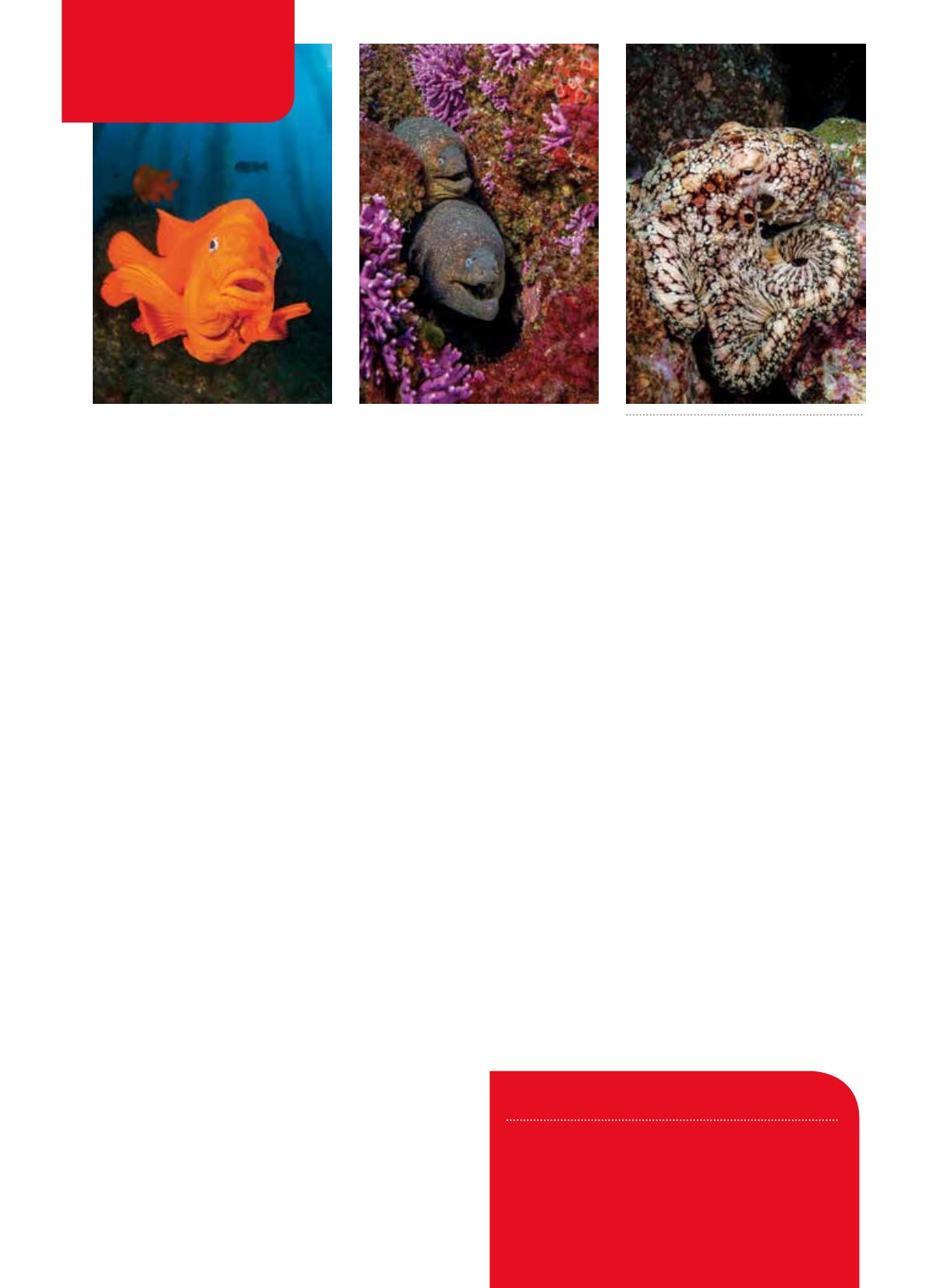

M
any of us started diving to be
explorers. We descend into the
underwater world to seek out
new places and new critters.
Adventure is in our nature,
which is why it’s not unusual
for divers to be disappointed by repeated returns to
the same dive site. Some divers think they won’t see
anything new. After diving a site once, they believe they
already know it and would rather go somewhere else.
Ask the pros about this, and you’ll hear a different
story. Divemasters and underwater photographers will
tell you that you can’t possibly know a particular dive
site after only one dive. Watching TV footage or leafing
through a dive magazine you’ll see some spectacular
coverage. This is rarely the product of a single dive;
instead it probably represents countless hours spent
on a site. Thirty seconds of footage might be the result
of weeks of diving. And that image on the front page?
Professional photographers may do numerous dives to
learn about an area and its inhabitants before achieving
just the right angle, lighting and subject.
A well-known underwater photographer once said,
“After you’ve done 50 dives on a site, you really get to
know it — you learn all the inhabitants of that particular
corner of the reef. You know where individual fish hang
out and learn their routines, and you can even track their
lives.” Sometimes we forget that our window into the
underwater world is brief. It would be as if someone got
a glimpse of your world while you were standing in line
at the airport: They would have no idea where you came
from or what adventures you were about to embark upon.
I got my first sense of the “recheck” concept while
teaching open-water scuba classes at the Channel
Islands in the mid-1990s. A particular cove at Anacapa
Island worked very well for certification dives, so I
usually asked the captain to take us there. After a skills
session in the shallow sand flats, I routinely took the
students on a short tour of a nearby rock reef. Among
the attractions was a pair of resident moray eels. For
several summers I took groups near that pair of eels,
stopping while the eels showed off their stuff, on an
almost weekly basis.
At another favorite Channel Islands spot I always
encounter a very bold garibaldi. Even as the kelp forest
and anemone bed wax and wane with the seasons, I
can find a garibaldi. While I can’t be sure it’s the same
fish, every time I visit that part of the reef a garibaldi is
there flashing its bright orange body at me.
Other reefs I return to hold their own special
creatures. Octopuses, bluebanded gobies and island
kelpfish all have their own routines and habits. They
reside near features in the reef that don’t change with
the seasons, and I find I can revisit these creatures
whenever I do a reef recheck at a particular site.
I invite you to take the recheck approach whenever
you return to a particular dive site. As you gain
familiarity with the site and its residents, you may
discover that you are exploring a particular dive site at
new levels and discovering new things.
AD
ALLISON SALLMON
REEF RECHECK
106
|
SPRING 2016
MEMBER
TO MEMBER
By Douglas Klug
SHARE YOUR STORY
Do you have tips, advice, travel strategies, dive techniques,
lessons learned or other words of wisdom to share with your
fellow divers?
Alert Diver
wants your story! Email it to M2M@
dan.org, or mail it to “Member to Member,” c/o
Alert Diver
,
6 W. Colony Place, Durham, NC 27705.
ANDY SALLMON
ANDY SALLMON
Diving a site repeatedly is a great way to
really get to know its denizens.
From left:
garibaldi, moray eels, two-spot octopus


















